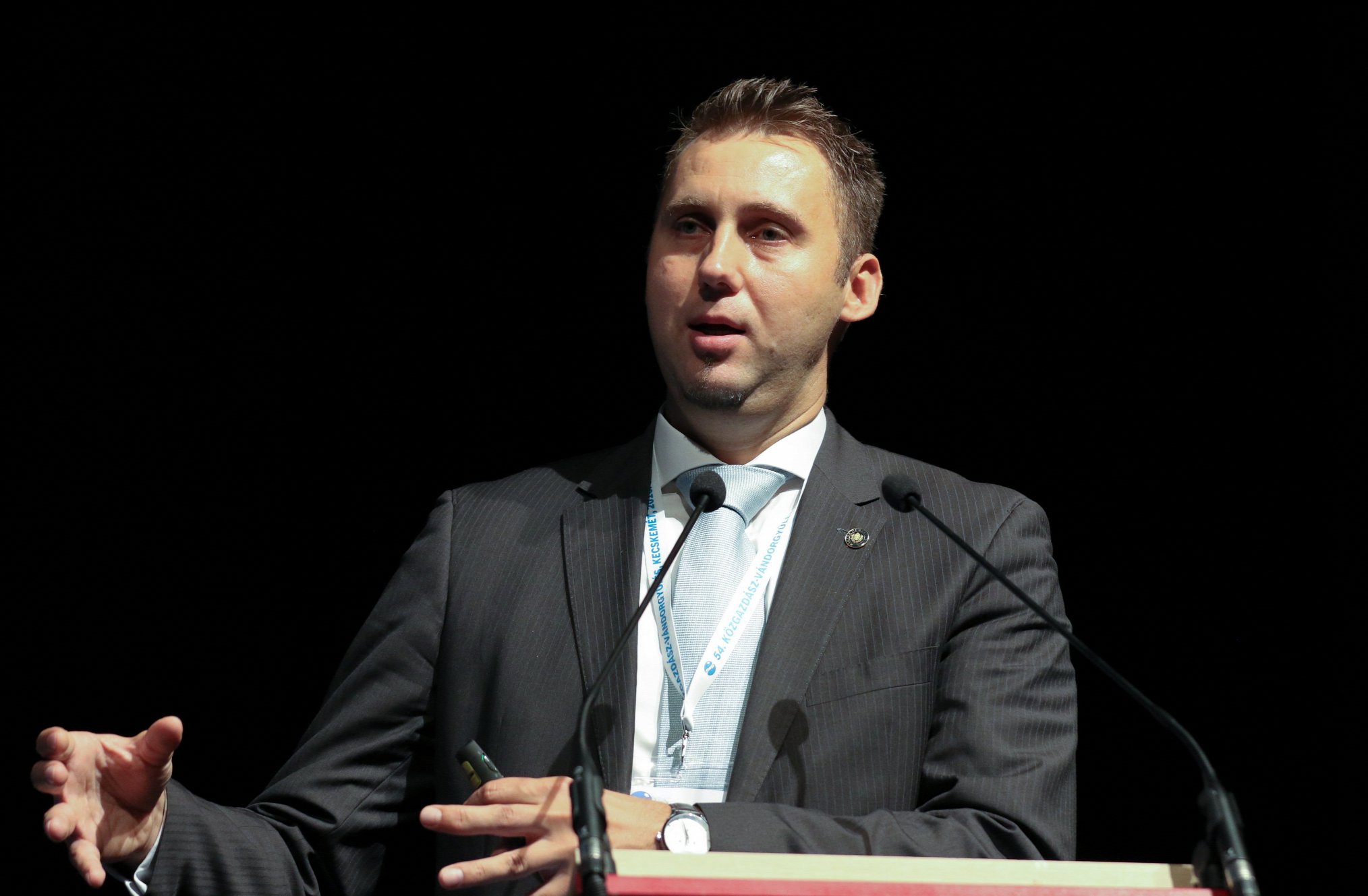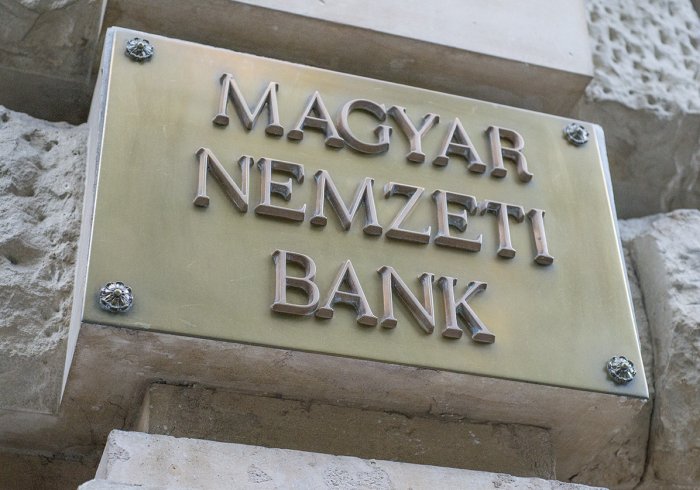Central Bank Pledges Further Tightening After Rate Hike

MNB deputy governor Barnabás Virág says the Monetary Council was united in its decision to raise the key rate by 30 basis points.
Photo by MTI / János Bugány.
The National Bank of Hungary (MNB) raised its key rate to 1.2% at its latest rate-setting meeting, with the 30-basis-point raise higher than expectated. The central bank said it would continue the tightening cycle, taking monthly steps, as long as inflation risks persist.
As anticipated, the Monetary Council of the MNB decided to raise the base rate by 30 basis points to 1.2% at its rate-setting meeting on July 27. The central bank also raised the overnight deposit rate to 0.25% from -0.05%, increased the one-week collateralized loan rate to 2.15% from 1.85%, and pledged to end repo (repurchase agreement) tenders.
The central bank promised to take “firm steps” in the coming months to combat inflation, which accelerated to 5.3% in June, the highest in the European Union.
The bank had already increased the base rate by 30 basis points to 0.9% on June 22. Previously, the MNB’s base rate had been on hold at 0.6% since July 2020.
“The Monetary Council will continue to raise interest rates until the inflation outlook stabilizes in a sustainable manner near the central bank target and inflation risks are under control,” MNB deputy governor Barnabás Virág said in a statement following the rate-setting meeting.
“The Monetary Council was united today in taking a firm step, which will be decisive for the continuation of the rate cycle,” Virág said. “Our goal remains to achieve price stability as soon as possible.”
No Surprise
The move came as no surprise and was in line with analysts’ expectations. Inflation has remained above 5% for some time now, Századvég analyst Dániel Molnár pointed out; however, the extent of the council’s move was questionable, he added. Molnár thinks that the MNB’s decision might strengthen the forint, although inflation in the short term is caused by the low base rate of oil prices and the restarting of the economy; therefore, the current rate hike decision is more likely to shape inflation in the medium term.
When base effects are eliminated and imbalances in demand and supply phased out, the acceleration of the inflation rate might slow; however, further steps are needed from the central bank, Molnár said. He expects that the MNB will continue the tightening process in September.
Inflation in June was higher than expected, and inflationary pressure also intensified, Takarékbank head analyst Gergely Suppan comments, reflecting on the possible reasons behind the scale of the MNB’s rate rise. According to him, previous messages from the MNB had already hinted at the move. Suppan expects the base rate to reach 1.5% by the end of the year, but the tightening cycle might continue into early 2022, raising the key rate to 1.75%.
He believes further rate hikes will be necessitated due to the mounting inflationary pressure. “The prices of services and raw materials have significantly grown, and higher salaries, due to the lack of workforce, might also lead to a higher inflation,” Suppan added.
Exceeding Expectations
The 30 basis-point raise exceeded market expectations, Equilor analyst Zoltán Varga said. He also expects inflation to accelerate in the coming months; however, as base effects gradually phase out, inflationary pressure might ease in the third quarter of the year. Varga recalled that the central bank expects inflation to return below the tolerance band by early 2022, and by the middle of next year, inflation could be stable, according to the MNB’s expectations.
The central bank “has confirmed its shift to policy orthodoxy and a complete turnaround on the dovish-hawkish scale,” international newswire Bloomberg cites Marek Drimal, an economist at Societe Generale SA in London, as saying. “The forint should reflect this tectonic change and strengthen once global sentiment and liquidity conditions improve,” Drimal added.
Tuesday’s move by the MNB was indicative for the next step, deputy governor Virág explained, adding that policymakers plan to assess the impact of the tightening in September.
The rate hike saw the Hungarian forint gain more than half a percent and rebound from three-month lows immediately after the decision on July 27. However, the next day the currency had slid 0.08% at the time of writing to trade at 359.30 against the euro as disputes between the government and the European Union over the recovery funds kept it under pressure.
Numbers to Watch in the Coming Weeks
Despite of August being the traditional summer vacation month, the macroeconomics calendar is pretty crowded in the upcoming weeks. On July 30, the Central Statistical Office (KSH) publishes May earnings data. On August 4, June retail trade figures will be out. Two days later, on August 6, the KSH reveals how the Hungarian industry performed in June; the first reading will be followed by a second on August 12. On August 10, July consumer price index will be released.
This article was first published in the Budapest Business Journal print issue of July 30, 2021.
SUPPORT THE BUDAPEST BUSINESS JOURNAL
Producing journalism that is worthy of the name is a costly business. For 27 years, the publishers, editors and reporters of the Budapest Business Journal have striven to bring you business news that works, information that you can trust, that is factual, accurate and presented without fear or favor.
Newspaper organizations across the globe have struggled to find a business model that allows them to continue to excel, without compromising their ability to perform. Most recently, some have experimented with the idea of involving their most important stakeholders, their readers.
We would like to offer that same opportunity to our readers. We would like to invite you to help us deliver the quality business journalism you require. Hit our Support the BBJ button and you can choose the how much and how often you send us your contributions.









